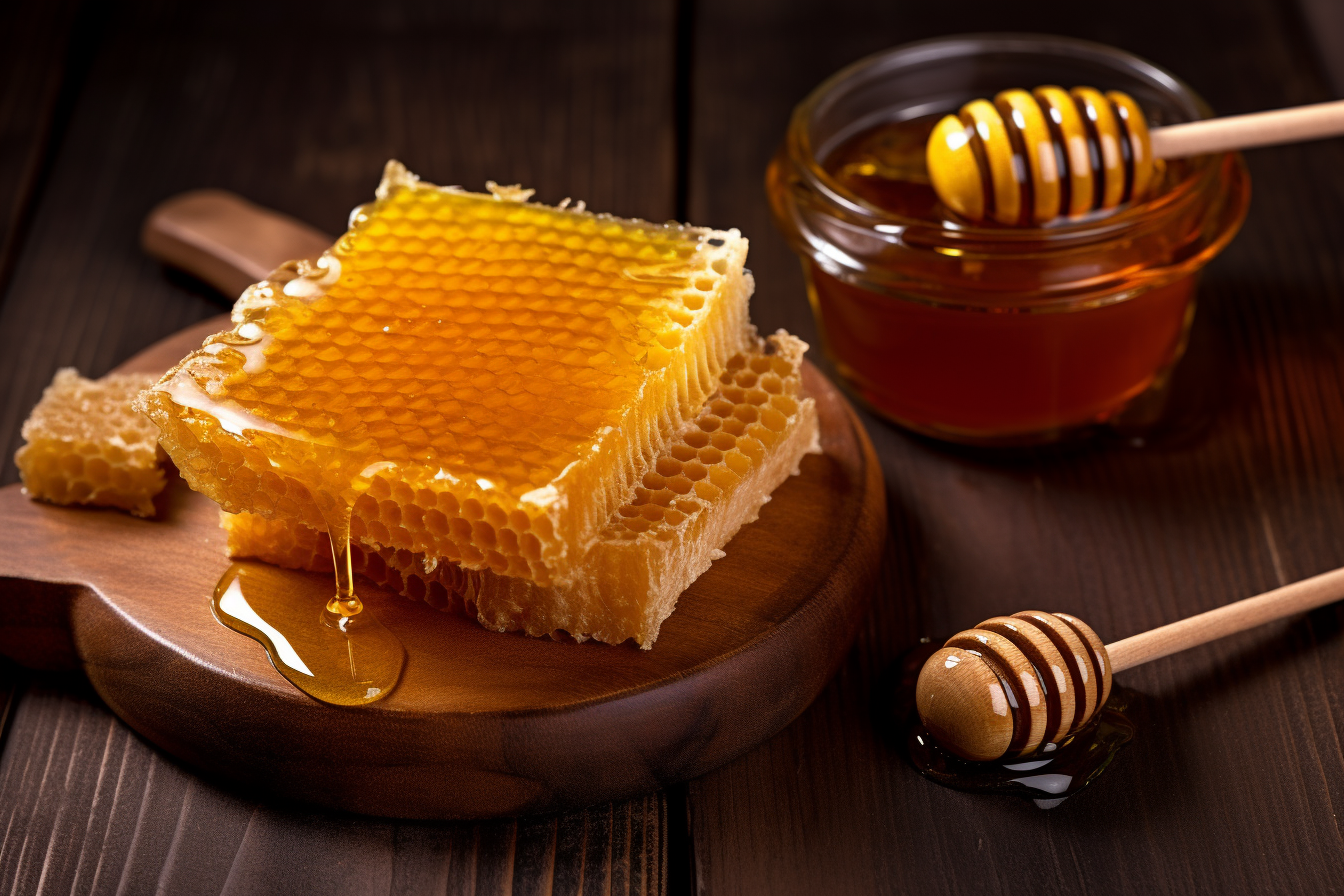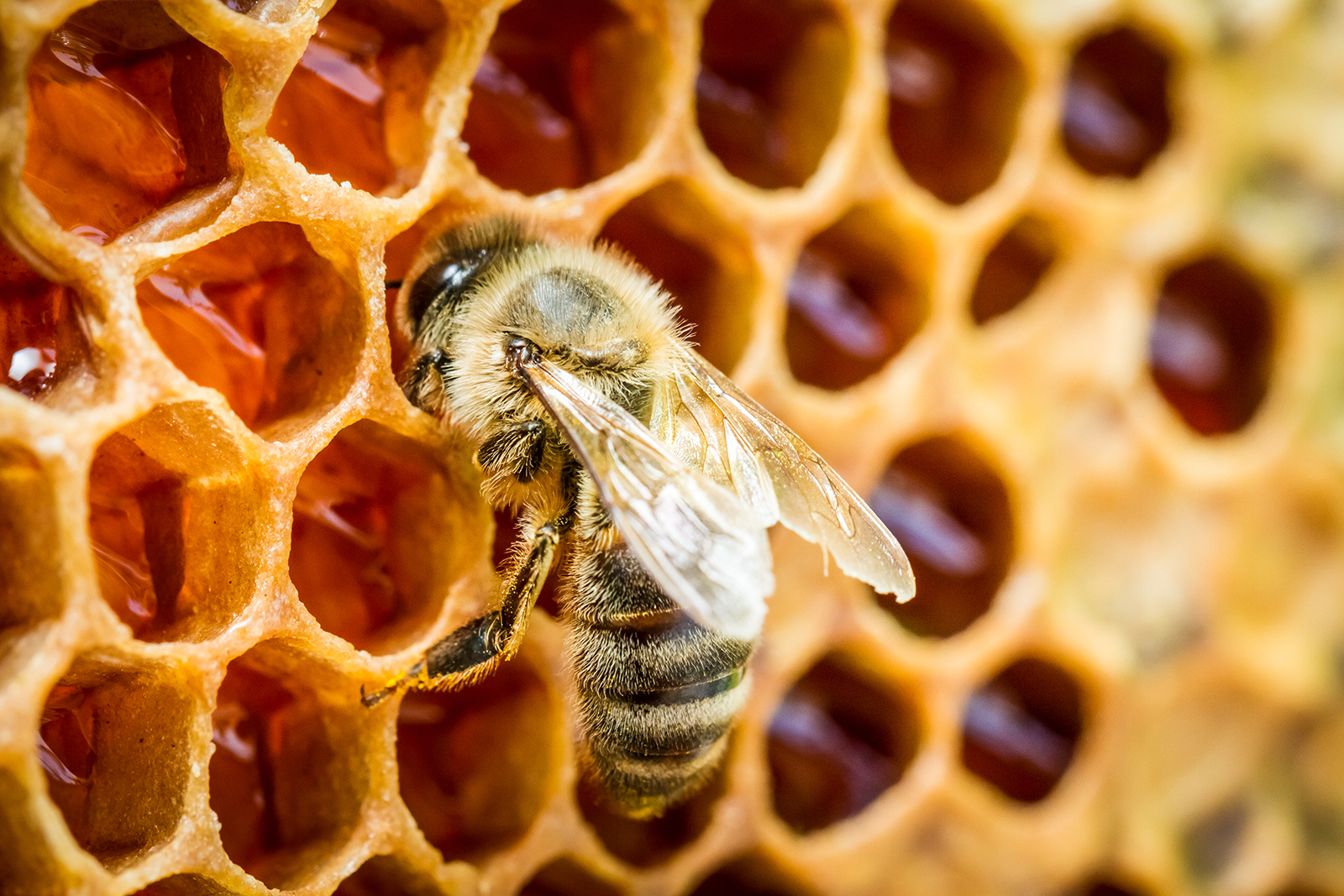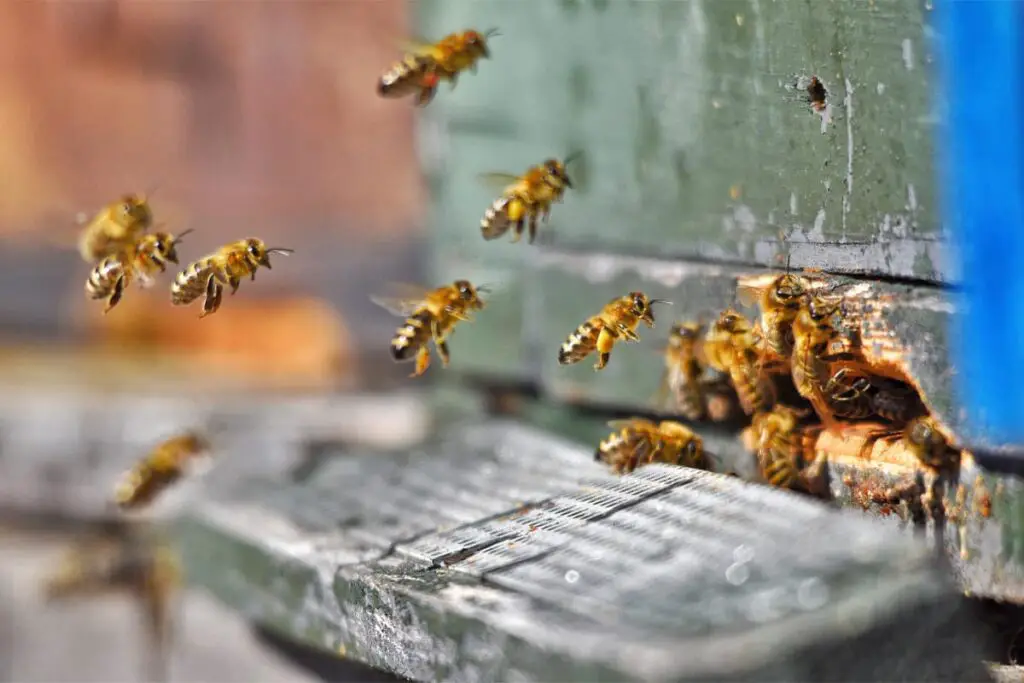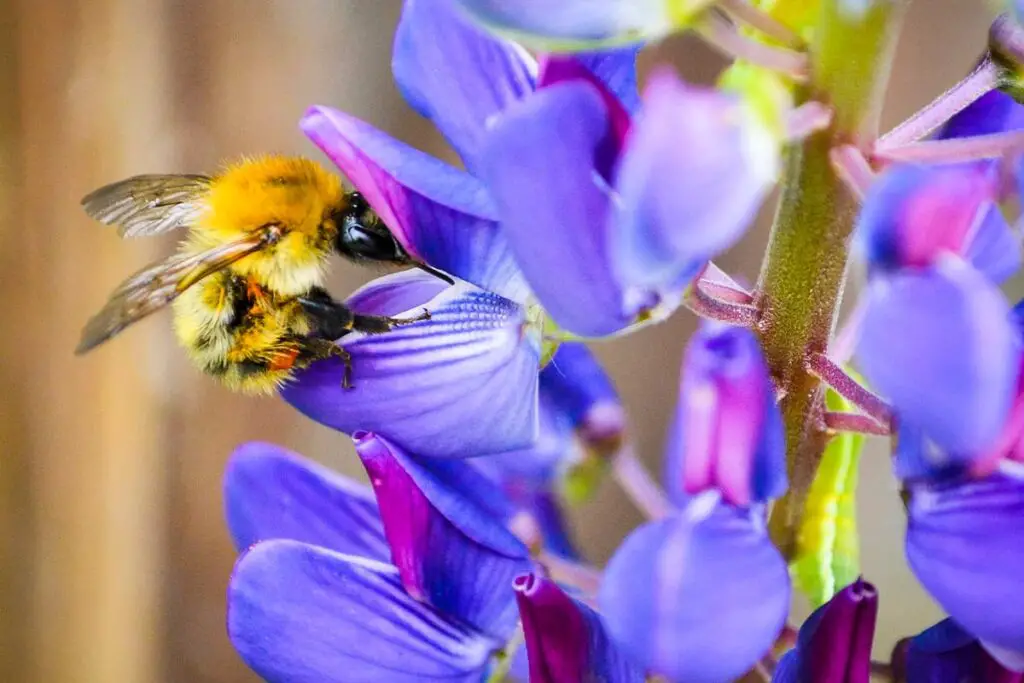
As both an insect and honey enthusiast, it’s not uncommon that I hear people (sometimes jokingly, sometimes not) ask if honey is actually bee poop or vomit. It’s a common misconception that honey, the sweet and delicious substance we enjoy on our toast or in our tea, is a byproduct of bees’ bodily functions.
Honey is not bee poop or vomit, and is made from nectar that has been collected by bees and brought back to their hive. During the process bees mix the nectar with enzymes inside their honey stomach, an expandable pouch separate from their digestive system, and this starts the process of turning nectar into honey. This is quite different from being a waste product or regurgitated substance.
So, when we consume honey, we can set aside any worries about it being bee poop or vomit. The process of honey production shows that it’s actually a careful process involving nectar collection and enzyme reactions that lead to the sweet and nutritious product we know and love.
Bee Biology and Waste
There are a lot of misconceptions about bees and honey. One common myth is that honey contains bee poop. To demystify this belief, let’s dive into the fascinating world of bee biology and waste. It’s not as gross as you might think!
Digestive System
First, it’s essential to understand the honey bee’s digestive system. Honey bees have a specialized stomach, called the honey stomach or crop, where they store nectar collected from flowers. This nectar then undergoes a transformation process involving enzymes and evaporation, ultimately turning into honey.
It’s important to note that the honey stomach is separate from the bee’s actual digestive stomach, called the ventriculus. This is where they process the nutrients for their own Survival. They also have another organ known as the ileum, where waste products from the ventriculus and Malpighian tubules are sent to the rectum for storage before being excreted through the anus (Honey Bee Suite).
Excretion Process
Honey bees don’t poop out honey. Bees usually leave their hive to defecate to maintain cleanliness. The waste products from their ventriculus and ileum are stored in their rectum until they can find an appropriate time and place to defecate. Honey, on the other hand, is a valuable food source that bees store in their hives for use during the winter months when nectar is scarce (LearnBees).
The honey-making process and waste excretion process in honey bees are distinct and separate. Honey is not a waste product, and it does not come from the bee’s rectum. Understanding the biology and waste management of bees helps dispel the myth that there is bee poop in honey.
Honey Production Process
In the honey production process, bees go through several crucial steps to transform nectar into honey. We can break it down into the following sub-sections: Collected Nectar, Nectar Transformation, Storage, and Ripening.

Collected Nectar
Bees collect nectar from flowers using their long, tube-shaped tongue called the proboscis. They store the extracted nectar in a specialized organ called the honey stomach, or crop.
Nectar Transformation
The transformation of nectar into honey begins while it is still inside the bee’s honey stomach. Two enzymes – invertase and glucose oxidase – mix with the nectar, beginning the process of breaking down the complex sugars into simpler sugars (Grampas Honey).
After this stage, the bees return to the hive, where they pass the nectar to other worker bees through a process called trophallaxis. This process allows for the evaporation of some of the water content in the nectar, making it more concentrated.
Storage and Ripening
Once the nectar is sufficiently concentrated, the worker bees then deposit it into the hexagonal wax cells within the honeycomb. The bees use their wings to fan and evaporate even more water content, reducing the nectar’s moisture levels further to create a thicker, more syrupy consistency. When the honey reaches its ideal moisture content, which is around 17-18% (Live Science), the bees will seal off the cells with a wax cap to keep the honey fresh and protected from contaminants.
Throughout this entire process the nectar never comes in contact with the bee’s digestive system or becomes contaminated by their waste products. Instead, honey is created through a complex and fascinating process of nectar collection, transformation, and storage by bees. It’s really quite beautiful!
Quality Control in Beehives
In beehives, honey production is a well-regulated process to maintain the quality and cleanliness of honey. When nectar is gathered from flowers, bees will store it in their honey stomach. This expands to hold the collected nectar before returning to the hive (Honey Bee Hobbyist). During the journey back to the hive, the worker bee will mix the nectar with enzymes that aid in breaking down the complex sugars into simpler forms.
Once back in the hive, the worker will pass the partially-processed nectar to other workers. These bees will continue to process the nectar to remove as much moisture as possible. During this whole process, the nectar never comes in contact with any waste products, ensuring that honey remains free from contaminants.
Bees are very particular about maintaining the cleanliness of their hive, especially when it comes to honey storage. They have separate areas in the hive for honey storage, larval development, and waste elimination. This segregation of tasks and storage areas helps prevent any fecal contamination of the honey (The Straight Dope).
Is There Bee Poop in Honey?
Honey is not bee poop, nor is it vomit. Bees use their honey stomach, which is an expandable pouch, to store nectar as they transport it back to the hive. During this process, the honey stomach mixes two enzymes with the nectar, kickstarting the honey production process.
Although at specific stages during this process honey does gets regurgitated from the honeybee’s mouth, there’s an important distinction between regurgitation and vomit. Honey doesn’t come out of the honeybee’s rectum, and it’s not a waste product.
Interestingly, it’s also important (and comforting) to know that bees are very hygienic creatures. They have designated areas within the hive where they defecate, away from the honey and brood cells. This helps keep the hive clean and free from contamination.
Health Concerns and Regulations
The honey creation process effectively separates honey from bee waste, meaning that consumers of the end product (be they bee or otherwise!) don’t have to worry about ingesting bee poop.
In order to ensure honey safety and quality, regulatory agencies like the United States Food and Drug Administration (FDA) enforce strict guidelines and standards for honey production and sales. Honey producers are required to follow these guidelines to prevent contamination and maintain a clean product for consumers.
Moreover, honey has natural antibacterial properties, thanks to its low water content and acidity level. This characteristic of honey deters the growth of harmful microorganisms, further making it safe for consumption (US EPA).
Given the misconceptions surrounding honey, I felt it important to reassure my readers that honey is carefully produced and regulated to ensure it is a safe and clean product. Please feel confident in indulging in this delicious and nutritious natural sweetener while knowing it’s free from poop or other undesirable substances.
Driven by a passion for those tiny creatures that rule our world, we at Bug Domain strive to be your go-to resource for information on insects.



